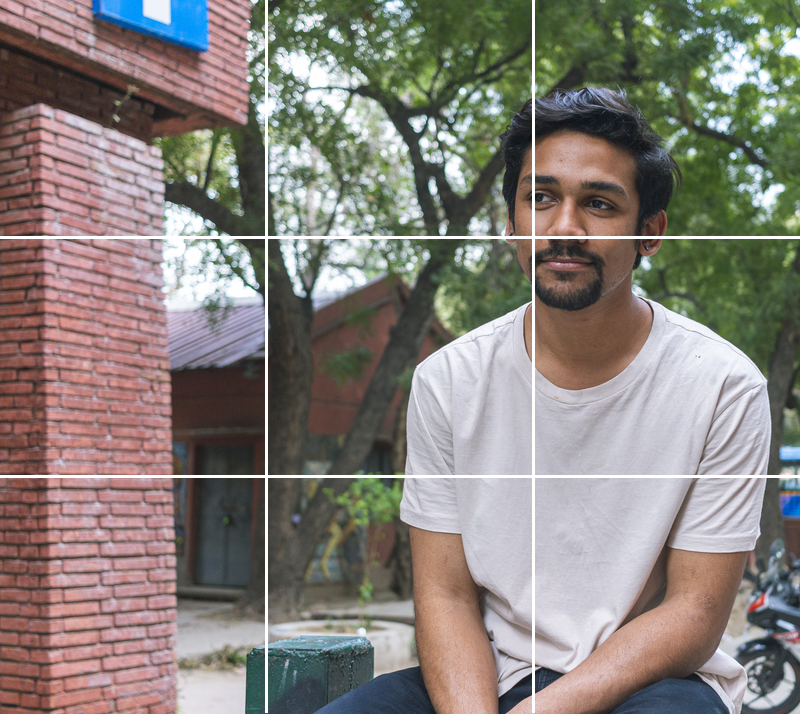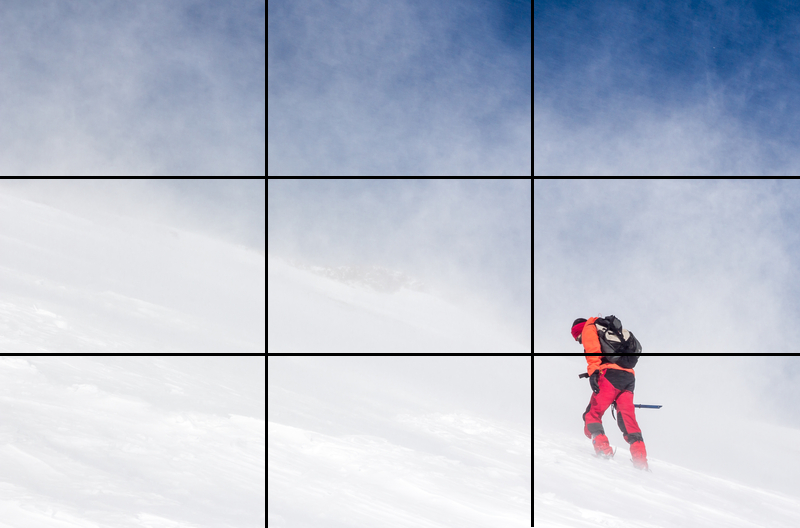The rule of thirds is one of the first things new photographers learn and it’s one of the fundamentals in composition. We’re sure there’s some deep psychological reason why photos that follow the rule of thirds draw our eyes but, to be honest, we don’t really care. We just know that it’s a good rule of thumb for taking amazing pictures.
The rule of thirds breaks any image up into nine squares by creating three vertical zones, three horizontal zones, and providing four points of intersection.

In general, you want to have your points of interest at one or more of the intersecting points because those are the parts of the photo that draw the eye.
The vertical and horizontal lines are used as guides to help you create balance in your photograph and can be used to give your pictures a sense of motion. Let’s take a look at a few different photography specializations to give examples of how the rule of thirds can help you take better photos in each.
Rule Of Thirds In Landscape Photography
It can be difficult to capture the sense of awe you get from a beautiful landscape. It’s not just the mountains, lake, or trees that make the land so beautiful. It’s the culmination of everything that gives you the overwhelming sense we call ‘awe.’ The rule of thirds can help you frame your photography. You’ll be amazed at how the right composition can change the gravity of the image.

Not pictured: Mountains, lakes or awe. But the picture DOES show the rule of thirds pretty well. The lone red tree on the left and the woods on the right frame the photo. Also notice how the field of grain is centered perfectly in the middle of the center grid.
Rule Of Thirds In Portrait Photography
Maybe it’s the family pictures we remember seeing in the past that did it, but many people have an overwhelming desire to center their photographs. Sometimes that works out well, but you might end up with a more interesting photo if you line the eyes up with one of the points of intersection and move your subject off to the side.

In this photo, our subject is lined up on the right with the top third line aligned almost in the middle of his face. The brick building on the left third helps to balance the image.
Rule of Thirds in Action Photography
Showing motion in your photographs can be hard to do. The rule of thirds can help give your pictures a sense of motion by guiding the eye from your subject to where the subject is going.

This guy isn’t moving very fast and is likely very tired, but the photo does an amazing job showing it. The subject is in the bottom right of the frame and we see the landscape rising to the middle left of the frame. The composition conveys forward motion by the subject while giving the impression that the cold wind is against him.
Summary
Composition can be an overwhelming subject and there’s certainly more to it than we can cover in one short article. The rule of thirds is an easy guide you can use as you learn the more complicated aspects of composition. Give it a try the next time you snap a few shots. It’s the fastest way to start taking better pictures.
